Just like a maestro conducts a group of musicians, a project manager conducts a team. It’s their role to make sure all team members are in sync, and that the final result of every project is akin to a beautiful symphony.
Project management is becoming more important to organizations of every kind, and as a result, there are more project manager roles ripe for the picking.
87.7 million employees will be required to work in the project management field by 2027, and they’ll earn 82% higher salaries than those in a non-project management related field.
Sounds like an opportunity to pay attention to — but what exactly does it entail? We’ll break down what a project manager job description looks like, as well as what to expect of the day-to-day grind.
What does a project manager do?
Project manager responsibilities revolve around making sure that a project successfully makes it from ideation to completion.
Project managers are change agents, they quite literally adjust how an organization operates with the goal of making those operations run more smoothly.They take on project goals as their own and use their skills and expertise to inspire a team to get the job done.
Project managers are very comfortable working in complex, dynamic environments, and are excited by the challenge of keeping track of a lot of multiple moving parts.
Here’s a brief list of their responsibilities:
- Plan a project from ideation to completion
- Solve problems that their team faces as a project progresses
- Track the budget and project costs as they go
- Communicate progress to senior management and other stakeholders
- Analyze the results of a project plan once a project is complete
In terms of a career trajectory, project managers can potentially grow to become program managers, where they’re responsible for multiple projects, or portfolio managers where they select, prioritize and align projects and programs within an organization.
What are the roles and responsibilities of a project manager?
A project manager oversees projects from beginning to end. Their exact roles and responsibilities may vary depending on the project, company, client, industry, and more. But, in general, PMs need to embrace the following 7 roles and responsibilities:
Planning
Project managers are responsible for the project plan. It’s the blueprint for team members, the project manager, and senior management to reference while a project is underway. It should:
- Define the project scope. In short, you need a thorough explanation as to what the project is trying to accomplish.
- Allocate resources. Resources include tools, external resources like agencies or contractors, physical equipment that may be needed, and more.
- Anticipate timeline and budget. Not only should the plan communicate the cost and timeline of the entire project, but both should also be broken down by stage or task.
- Detail how execution and documentation will happen. Determine which team members will perform each task, and how you’ll communicate to each other, and the wider organization when tasks are done.
- Proposal for follow-up and maintenance. The job isn’t done when the job is done. You’ll also need to lay out how you will analyze how well you did and make plans for maintenance moving forward, if you offer support or warranties.
The planning stage happens at the highest level, and focuses on establishing a project’s deliverables and requirements as well as how you intend to track and manage them.
monday.com’s high level project plan template allows project managers to manage dependencies, the project goal, and available resources together within a set budget and timeline.

Leading
A huge part of a project manager’s role is assembling and leading the team that will do the execution. This means the job requires a tight grasp on soft skills like:
- Excellent communication. Directives, information and feedback need to be expressed clearly and objectively.
- Leadership skills. The PM is the project leader — inspiration and motivation starts with the project manager.
- Keen eye for strengths and weaknesses. Who should work on what? A good project manager must be able to objectively and effectively answer this question.
- Transparency. It’s a part of the project manager role to speak openly and frequently with team members and any project stakeholder.
Execution
This responsibility is really just the day-to-day execution of the planning and leadership responsibilities.
Project managers are there to supervise the team as tasks play out. This means frequent check-ins, updating trackers, and communication with stakeholders about the project’s progress.
The aforementioned monday.com project tracker is a great general resource for this. Another great template to use if you’re building a technical product or software is the product roadmap template.
It’s great for longer-term projects as you can break out your project roadmap for each quarter.
By default, it includes a product manager or lead for each stage, as well as different development deliverables along the way.
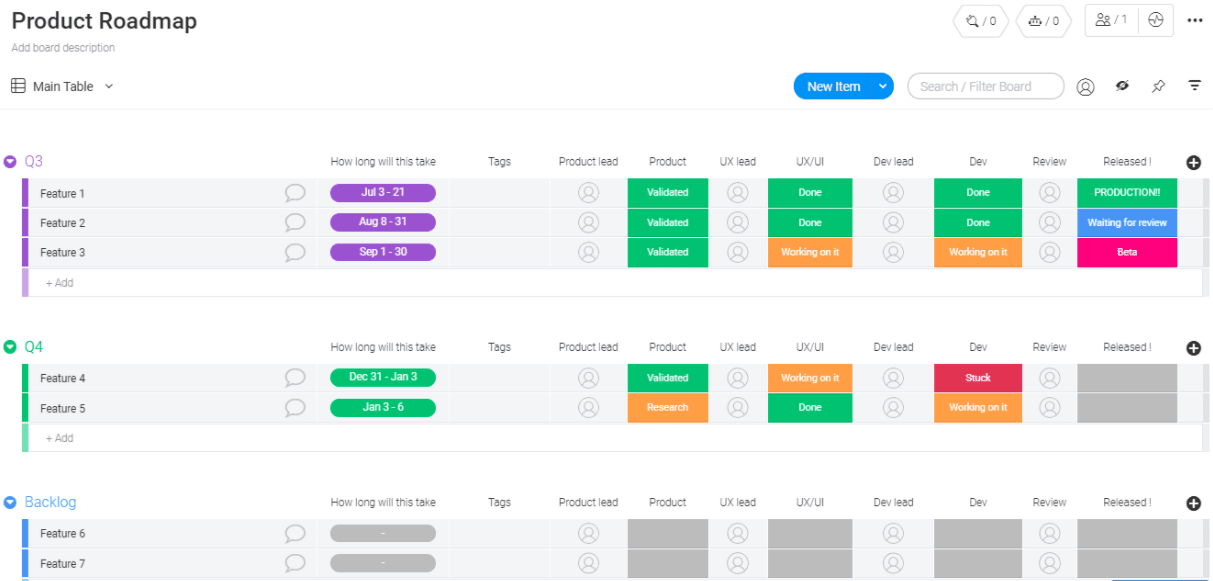
Time management
One of the hardest parts about being a project manager is staying on schedule. It’s also a key responsibility because effectively keeping track of the timeline is critical for managing expectations about a completion date.
The time management responsibility consists of:
- Solving problems quickly. The longer a team member is derailed, the longer your timeline will unexpectedly stretch. It’s the project manager’s role to get your team back on track as fast as possible.
- Risk management. Perform a risk assessment ahead of time and know the risks you might face as you progress, so you can help ensure they don’t derail your schedule.
If your project’s completion revolves around people needing to physically be available at certain times, scheduling work hours and days off will be another important responsibility.
You could be a construction project manager who needs to manage a team on site, or a project manager in a manufacturing plant who will need to schedule shifts around the clock.
monday.com has a weekly shift schedule template that’s easily adjustable on the go if team members call out sick or take vacation.
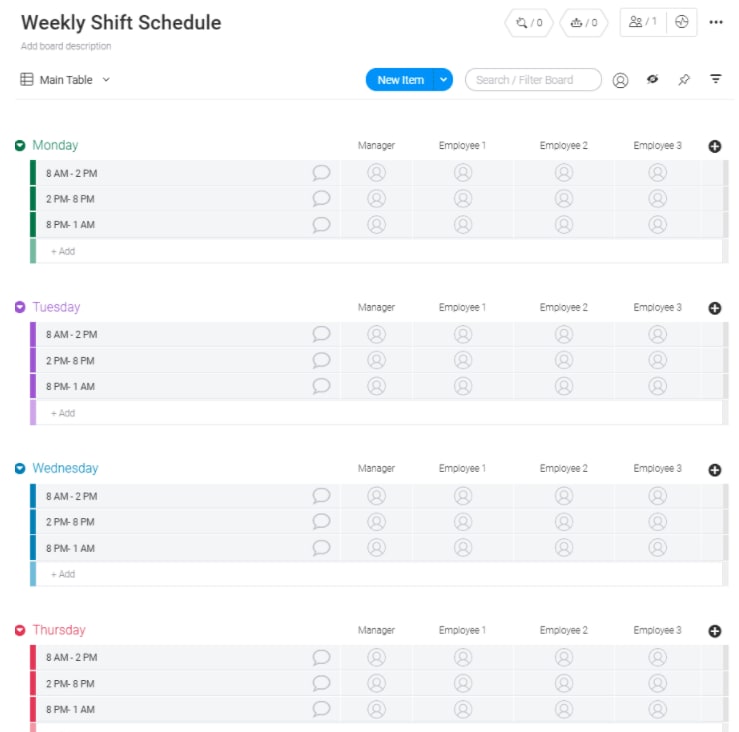
Budget
It’s the project manager’s role to calculate how much a project is going to cost, or figure out how to complete a project within a defined budget.
It’s also the project manager’s job to make sure their team sticks to the budget as they go.
When certain aspects of the project cost more or less than planned, project managers may need to reallocate the fund to fit the budget, or request additional funding.
Track your project against your budget using monday.com’s budget tracker template. It automatically breaks down expenses by department head and line item.
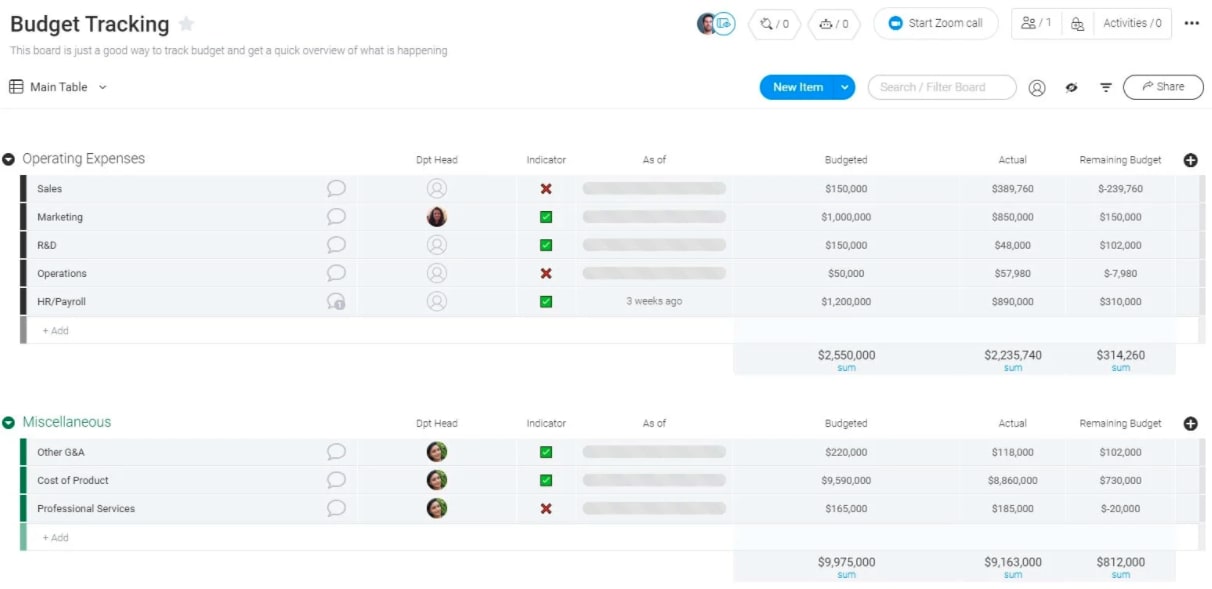
Documentation
The job’s not done until the paperwork is finished, and a big part of a project management role is overseeing project documentation. This includes:
- Measuring and analyzing progress. You should be documenting progress as you go. Always be able to answer the question, “how’s it going?” in detail.
- Data collection. How long did tasks take? How much of your budget was allocated and where? All relevant data should be tracked and archived.
- Verbal and written status reports. Meet frequently with team members to discuss the status of your project, and document those reports.
- Approvals. Project managers need to swiftly give approvals where needed, and those approvals need to be easy to track and view in case questions arise later.
- Archiving. Documentation needs to be saved in a systematic and logical manner so that it can be easily referenced in the future.
Maintenance
After a project has been completed, it may be the project manager’s role to manage any maintenance moving forward.
This can mean a lot of things, depending on the type of project, but generally includes:
- Supporting the final deliverable moving forward. Even if their team isn’t managing the day-to-day tasks, the project manager is often a part of building those plans.
- Measuring and optimizing the project plan. How close were your original project plans to reality? It’s the project manager’s role to analyze how well their team did and capture any lessons learned that can improve future projects.
As a project progresses, you can track both expected and unexpected bumps in the road using monday.com’s risk register template.
This allows you to document the number of risks that occurred as well as exactly how your timelines and budgets were affected as a result.
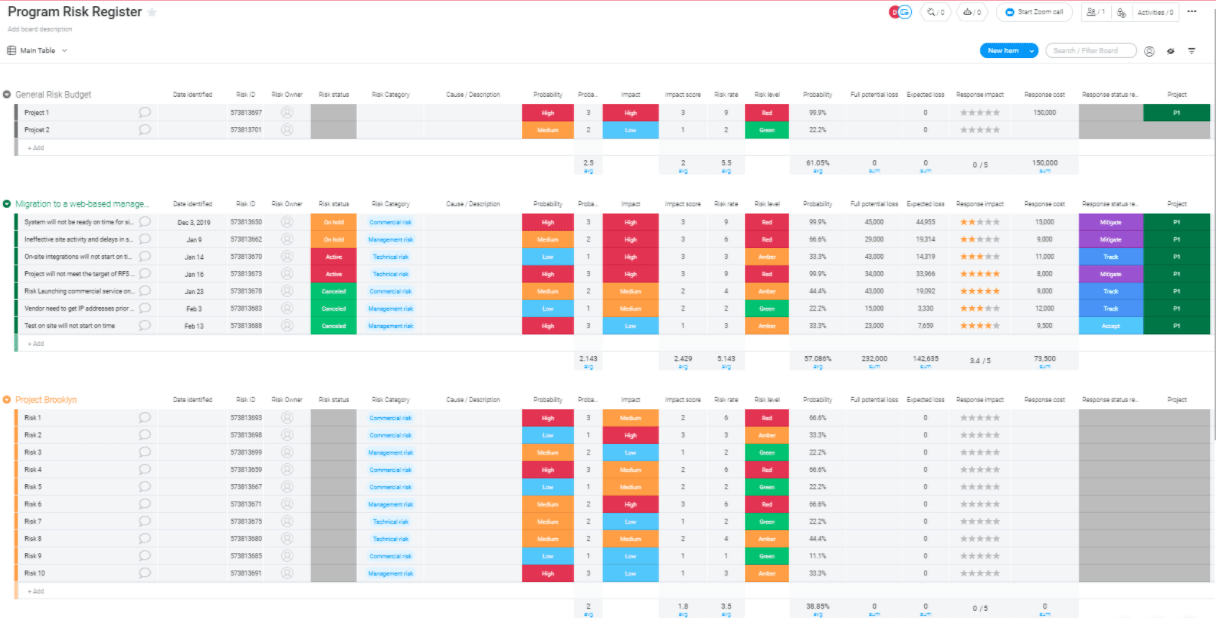
How monday.com lessens the project management burden
The most successful project managers use a reliable and effective tool to track their day-to-day operations and facilitate team communication and updates.
Not to brag, but we’re confident that monday.com is the best solution for project managers. The platform’s easy to use with a beautiful UI that team members will be excited to login to everyday:
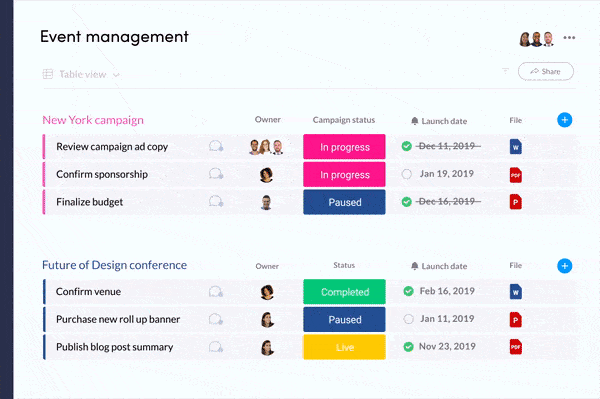
Automations are easy with monday.com. Each time a task is completed, the next team member can be automatically notified.
Tag each other in communications as you go, and optimize your instance so that you never get a notification that isn’t directly relevant to you.
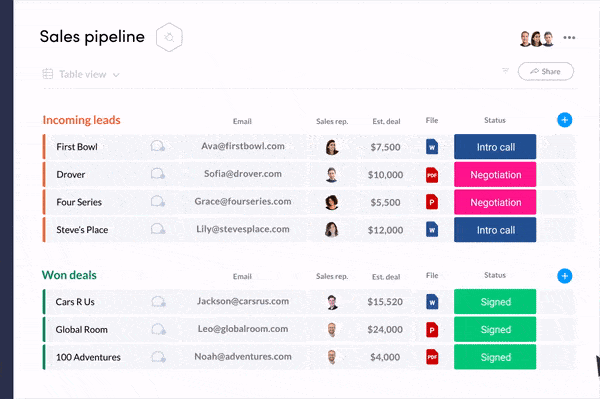
Visualizing a project effectively looks different for everyone. Some project managers prefer tables, others prefer Gantt charts or Kanban boards. Whatever floats your boat, you should be able to toggle to that view easily.
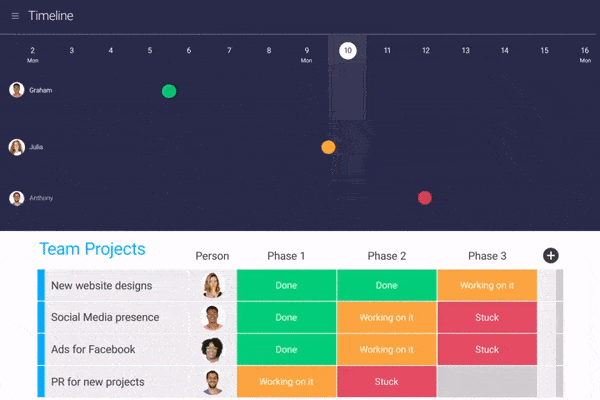
You’re probably already using other tools for your operations to run smoothly. monday.com integrates with a lot of different tools and apps so that you can start working with the platform without interrupting your tech stack.
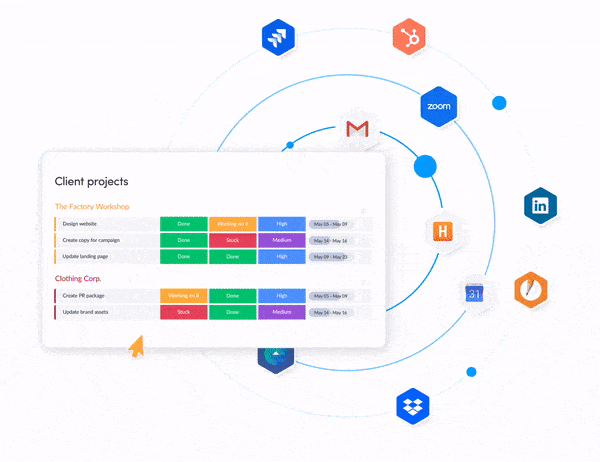
Finally, you’ll never have to start from scratch. Outside of the templates we’ve already mentioned, monday.com has over 200+ templates to choose from.
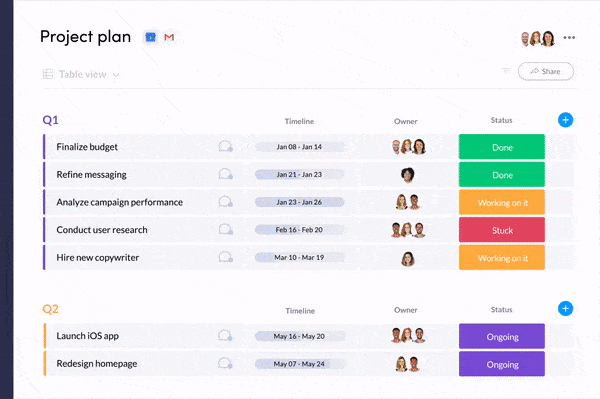
Conclusion
Project managers don’t have it easy, but the right tool can make operations run even more smoothly.
To keep a tight grip on all of the wide reaching responsibilities of being a project manager, look for a tool that includes the following:
- Easy-to-use UI
- Automations that make notifications a breeze
- Templates to use a starting point
- Integrations with tools you already use
- Different views for every type of visual learner
If you’re looking for a tool that goes way beyond project management, check out monday.com.

